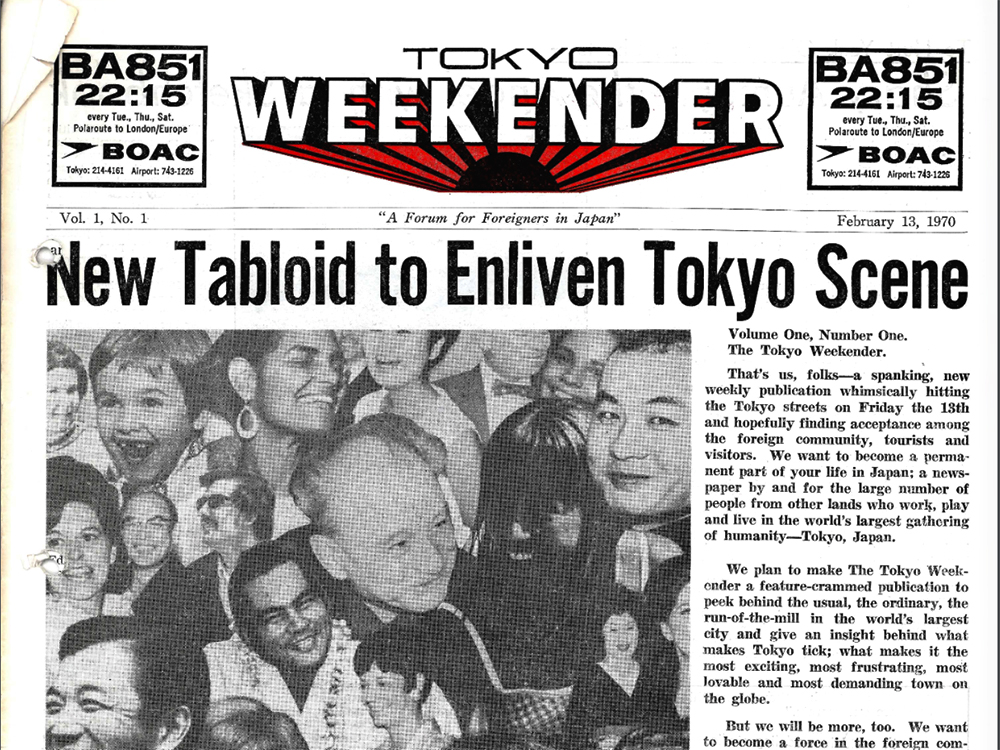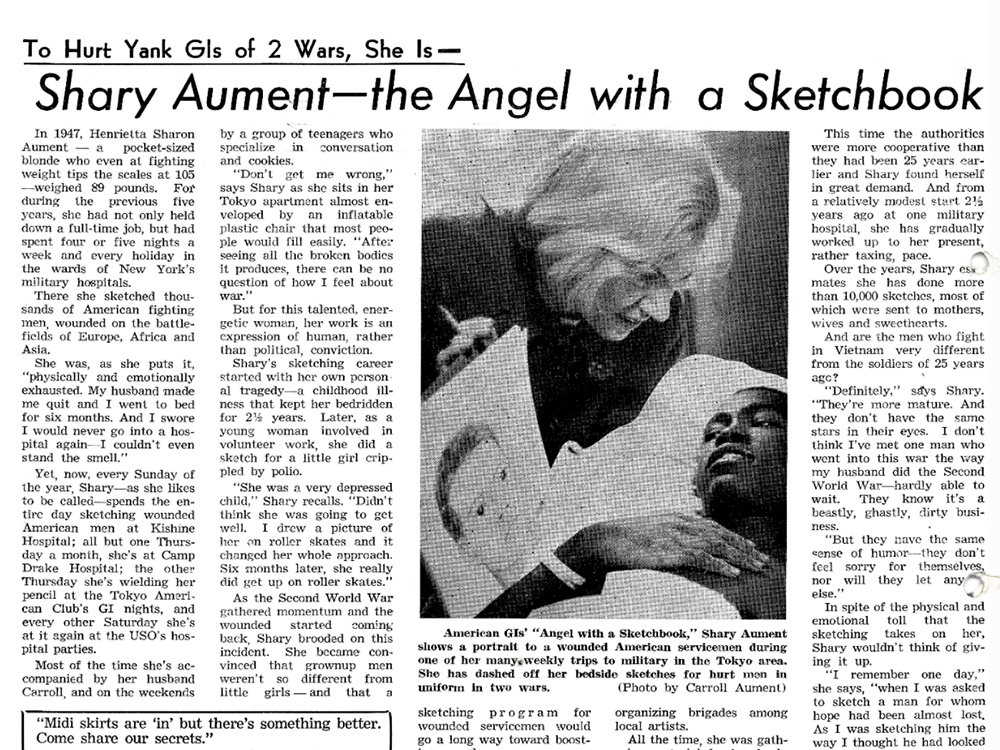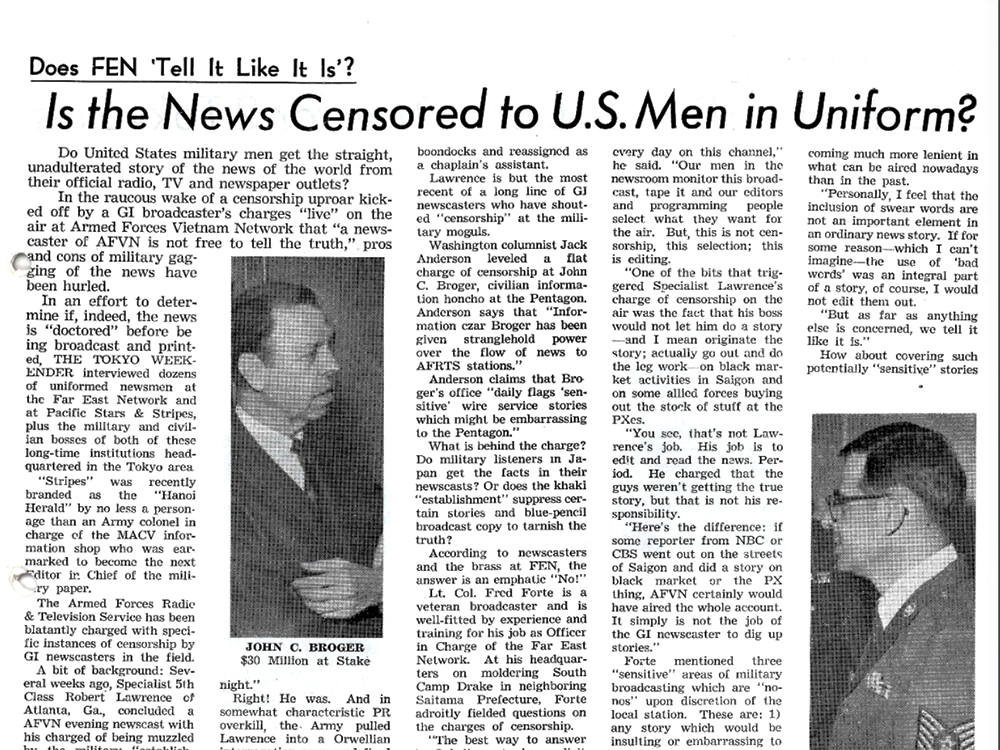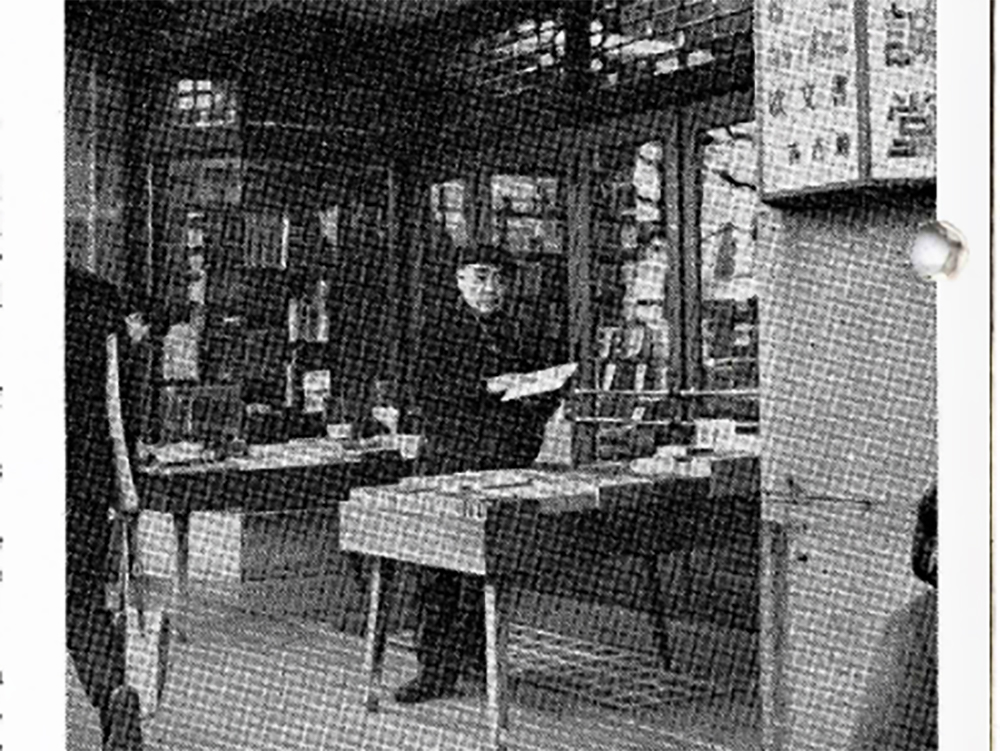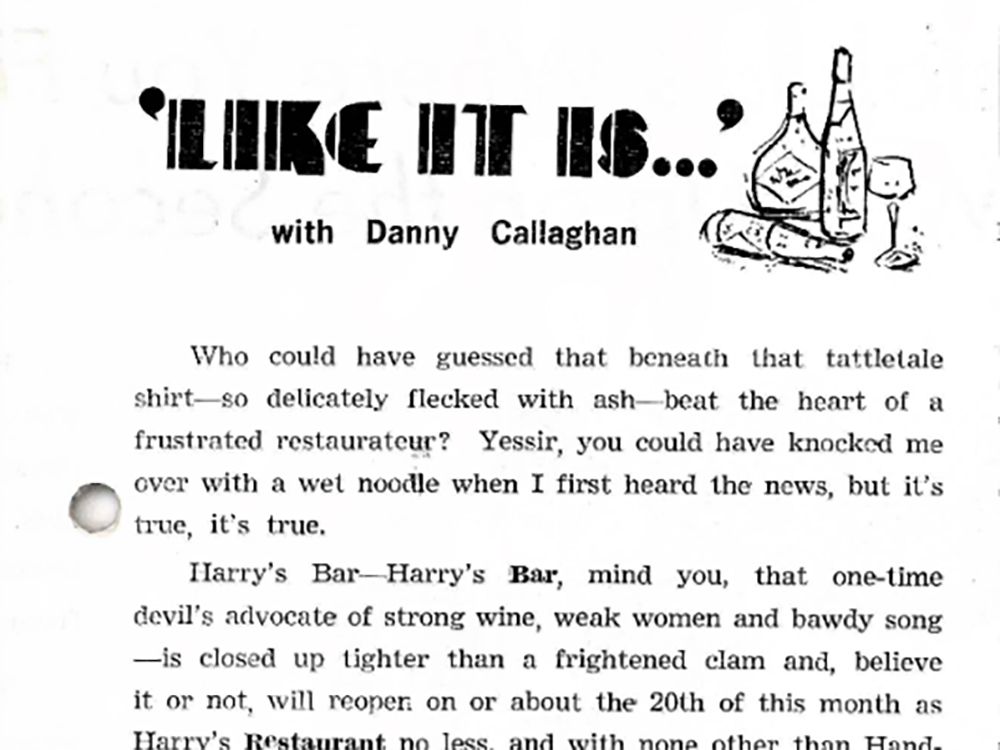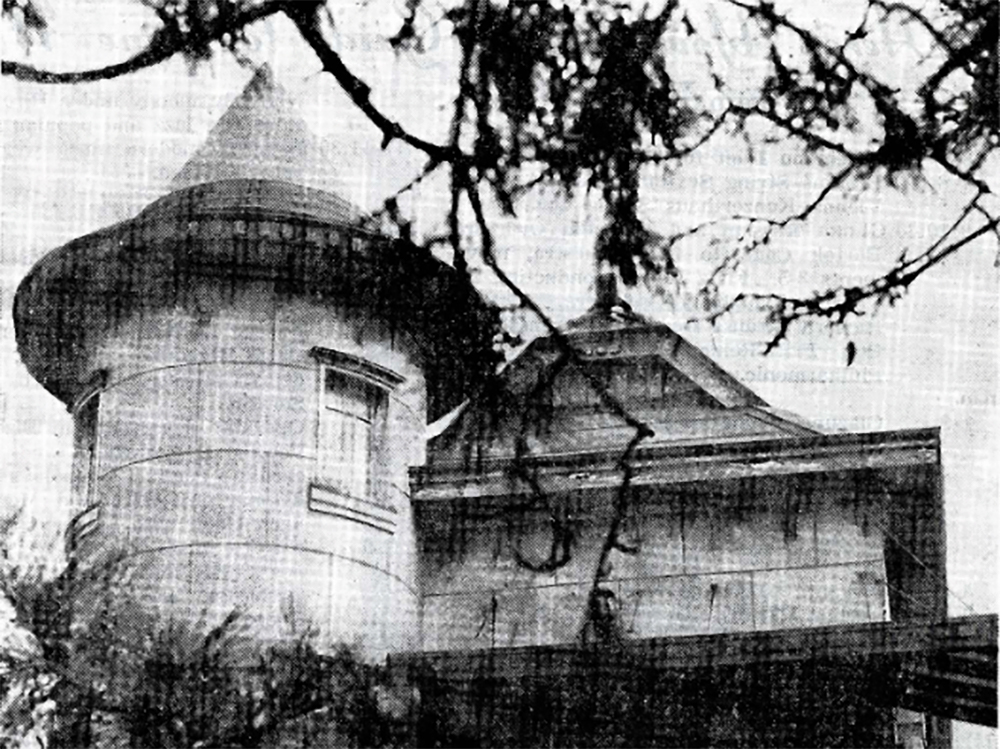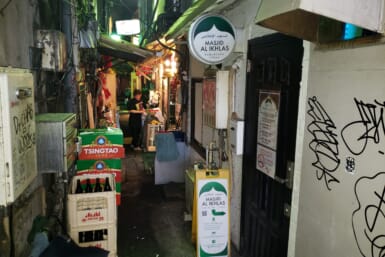On February 13, 1970 (Friday the 13th), editors and publishers Susan Scully and Millard (Corky) Alexander delivered the first issue of Tokyo Weekender with the announcement, “That’s us, folks–a spanking, new weekly publication.” While Tokyo Weekender has evolved from a weekly newspaper to a full-color, glossy monthly magazine, the mission hasn’t changed.
“We plan to become an opinionated, sassy weekly, full of moxie and fun,” wrote Scully and Alexander. “But, again, there is more. We want to become of public service, too. To become a force for betterment of the community and perhaps a force to bring the foreigners who live here a little closer together.”
Let’s open the pages of that first issue together and scroll through the topics and issues that made headlines 50 years ago in Tokyo.
Shary Aument – the Angel with a Sketchbook
USO public relations employee Shary Aument discovered that her childhood hobby of sketching portraits could bring cheer to injured soldiers. Supported by Eleanor Roosevelt, Aument traveled across America during World War II organizing brigades of artists to sketch bedridden wounded veterans, eventually publishing a book of sketches featured in the magazine Harper’s. During the Vietnam War, America’s wounded soldiers were sent to Japan, and so Aument moved to Tokyo, spending her days sketching wounded American men at Kishine Hospital, Camp Drake Hospital and other venues.
Is the News Censored to U.S. Men in Uniform?
Tokyo Weekender interviewed dozens of uniformed men involved in military media to determine whether news being reported from Vietnam was being “doctored” prior to broadcast and print. In light of a live broadcast delivered by Georgia-based newscaster Specialist 5th Class Robert Lawrence claiming charges of news suppression, Tokyo Weekender reached out to Tokyo-based broadcasters to see if they had a similar opinion to Lawrence, all of whom “answered with an emphatic ‘No!’”
Jimbocho: Where Bookworms Have a Browsing Bacchanal
Some things haven’t changed. Tokyo Weekender reporter Lewis Foster searched the bookstores of the Kanda neighborhood of Jimbocho, “where rare books are sold like old shoes.” As Foster notes, the two block-area of Jimbocho, which is lined with bookstores, is where a collector famously discovered a privately printed and extremely rare copy of Farmers of 40 Centuries for ¥200. Fifty years later, Tokyo Weekender writers are still searching for lost treasures in Jimbocho.
“Like It Is with Danny Callaghan”
Columnist Danny Callaghan clues readers into Tokyo’s food scene, noting that Harry’s Bar in Roppongi is reopening as Harry’s Restaurant, now offering Chinese and Mexican specialties. Writes Callaghan, “Roppongi needs another Chinese restaurant like Golda Meir needs Nasser, but if by some fluke Harry actually could come up with some passable Mexican food, he might very well have a winner. There just ain’t a decent bowl of chili and beans in town.”
“Nostalgia’s Where You Find It – Way Up on the Second Floor”
Writer and photographer Jonathon Helwig explored “the jumble of narrow streets and narrower buildings” of the Iidabashi and Daimon-Shimabashi neighborhoods searching for charming old structures that mix Oriental and Western architectural styles, representative of Tokyo’s continuing construction boom that started in the 1950s. “When walking with your eyes cast skyward you run the risk of getting creamed by a gravel truck, but the joy of discovering yet another construction gaffe might be worth the chance,” writes Helwig.
To step back in time and browse our premiere issue, visit the TW Archives: www.tokyoweekender.com/tw-turns-50/

